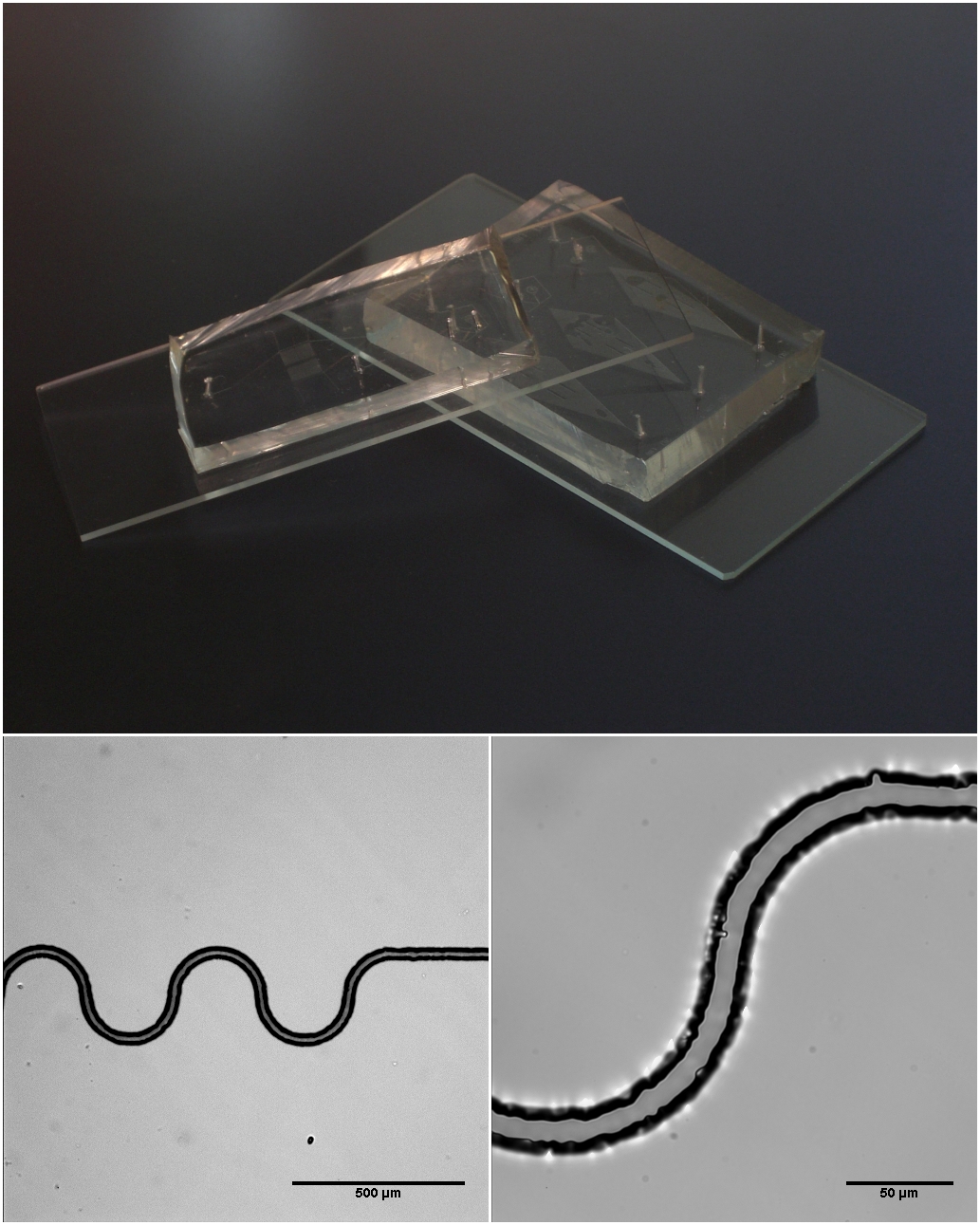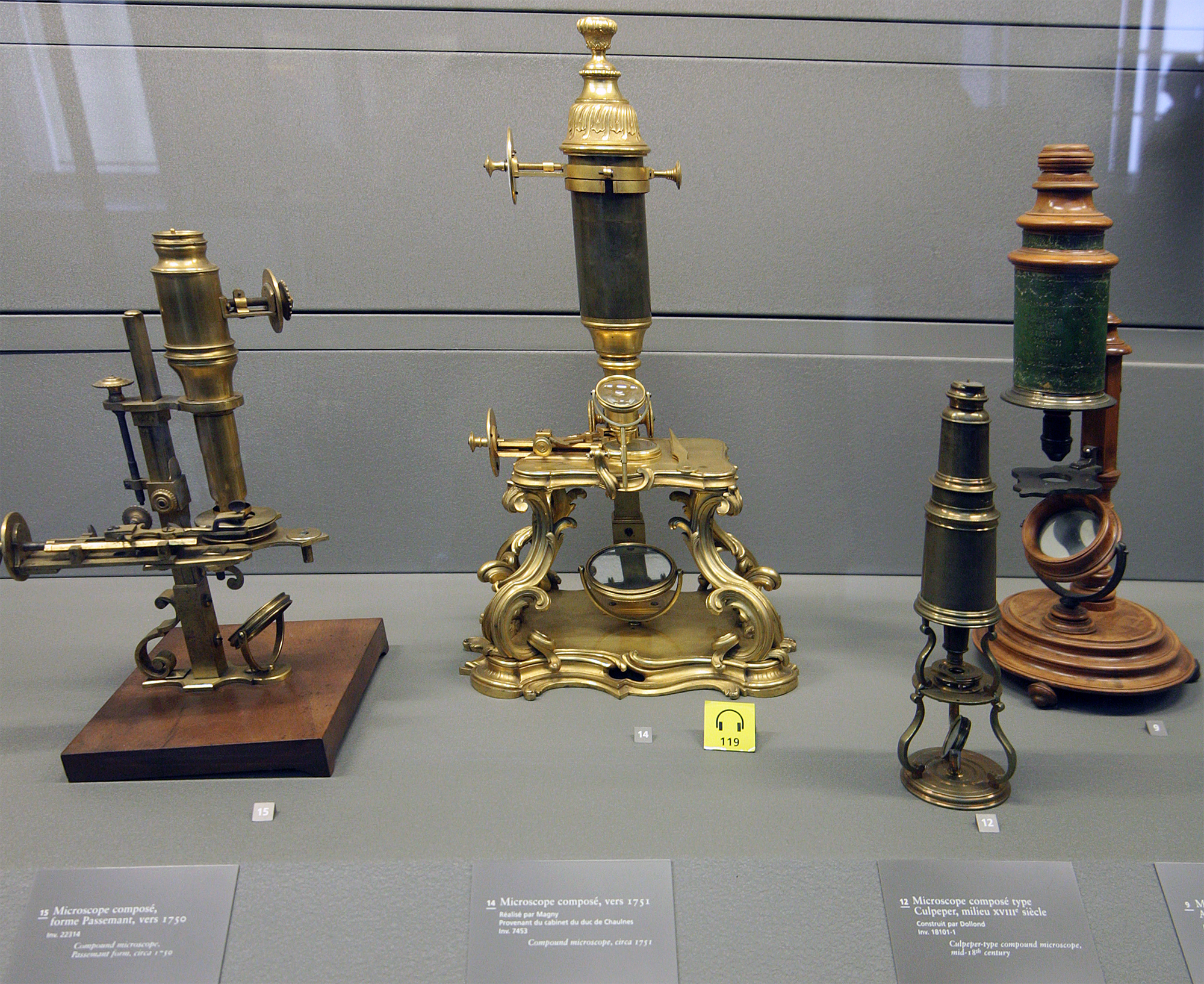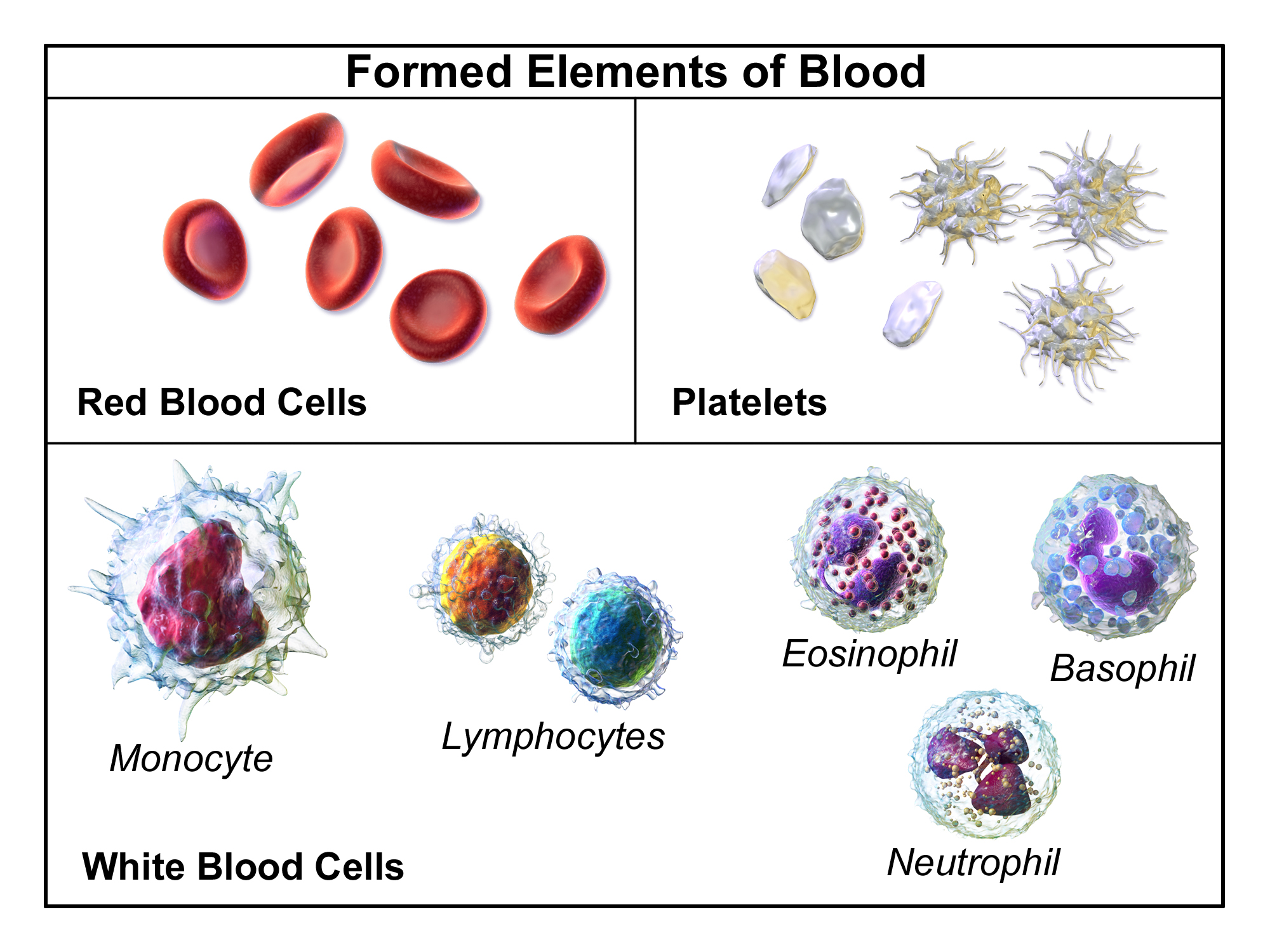|
Coulter Counter
A Coulter counter is an apparatus for counting and sizing particles suspended in electrolytes. The Coulter counter is the commercial term for the technique known as resistive pulse sensing or electrical zone sensing. The apparatus is based on the Coulter principle named after its inventor, Wallace H. Coulter. A typical Coulter counter has one or more Microchannel (microtechnology), microchannels that separate two chambers containing electrolyte Solution (chemistry), solutions. As fluid that contains particles or cells is drawn through the microchannels, each particle causes a brief change to the Electrical resistance and conductance, electrical resistance of the liquid. The counter detects these changes in the electrical resistance. Coulter principle The Coulter principle states that particles pulled through an orifice, concurrent with an electric current, produce a change in Electrical impedance, impedance proportional to the volume of the particle traversing the orifice. This ... [...More Info...] [...Related Items...] OR: [Wikipedia] [Google] [Baidu] |
Particle Transit Channel
In the Outline of physical science, physical sciences, a particle (or corpuscle in older texts) is a small wikt:local, localized physical body, object which can be described by several physical property, physical or chemical property, chemical properties, such as volume, density, or mass. They vary greatly in size or quantity, from subatomic particles like the electron, to microscopic scale, microscopic particles like atoms and molecules, to macroscopic scale, macroscopic particles like powder (substance), powders and other granular materials. Particles can also be used to create scientific models of even larger objects depending on their density, such as humans moving in a crowd or celestial bodies in motion (physics), motion. The term ''particle'' is rather general in meaning, and is refined as needed by various scientific fields. Anything that is composed of particles may be referred to as being particulate. However, the noun ''particulates, particulate'' is most frequently u ... [...More Info...] [...Related Items...] OR: [Wikipedia] [Google] [Baidu] |
Journal Of Laboratory Automation
''SLAS Technology'' (Translating Life Sciences Innovation) is a peer-reviewed scientific journal published by the Society for Laboratory Automation and Screening in partnership with Elsevier . The editor-in-chief is Edward Kai-Hua Chow, Ph.D. (National University of Singapore). The journal explores ways in which scientists adapt advancements in technology for scientific exploration and experimentation, especially in life sciences research and development. This includes drug-delivery; diagnostics; biomedical and molecular imaging; personalized and precision medicine; high-throughput and other laboratory automation technologies; micro/nanotechnologies; analytical, separation and quantitative techniques; synthetic chemistry and biology; informatics (data analysis, statistics, bio, genomic and chemoinformatics); and more. The journal was published from 1996 through 2016 with the title ''Journal of Laboratory Automation''. Its name changed in 2017 to more accurately reflect the evolutio ... [...More Info...] [...Related Items...] OR: [Wikipedia] [Google] [Baidu] |
Lab-on-a-chip
A lab-on-a-chip (LOC) is a device that integrates one or several laboratory functions on a single integrated circuit (commonly called a "chip") of only millimeters to a few square centimeters to achieve automation and high-throughput screening. LOCs can handle extremely small fluid volumes down to less than pico-liters. Lab-on-a-chip devices are a subset of microelectromechanical systems (MEMS) devices and sometimes called "micro total analysis systems" (μTAS). LOCs may use microfluidics, the physics, manipulation and study of minute amounts of fluids. However, strictly regarded "lab-on-a-chip" indicates generally the scaling of single or multiple lab processes down to chip-format, whereas "μTAS" is dedicated to the integration of the total sequence of lab processes to perform chemical analysis. History After the invention of microtechnology (≈1954) for realizing integrated semiconductor structures for microelectronic chips, these lithography-based technologies were soon ... [...More Info...] [...Related Items...] OR: [Wikipedia] [Google] [Baidu] |
Microfluidic
Microfluidics refers to a system that manipulates a small amount of fluids (10−9 to 10−18 liters) using small channels with sizes of ten to hundreds of micrometres. It is a multidisciplinary field that involves molecular analysis, molecular biology, and microelectronics. It has practical applications in the design of systems that process low volumes of fluids to achieve multiplexing, automation, and high-throughput screening. Microfluidics emerged in the beginning of the 1980s and is used in the development of inkjet printheads, DNA chips, lab-on-a-chip technology, micro-propulsion, and micro-thermal technologies. Typically, micro means one of the following features: * Small volumes (μL, nL, pL, fL) * Small size * Low energy consumption * Microdomain effects Typically microfluidic systems transport, mix, separate, or otherwise process fluids. Various applications rely on passive fluid control using capillary forces, in the form of capillary flow modifying elements, akin to ... [...More Info...] [...Related Items...] OR: [Wikipedia] [Google] [Baidu] |
Jewel Bearing
A jewel bearing is a plain bearing in which a metal spindle (tool), spindle turns in a gemstone, jewel-lined pivot hole. The hole is typically shaped like a torus and is slightly larger than the shaft diameter. The jewels are typically made from the mineral corundum, usually either synthetic sapphire or Ruby#Synthesis and imitation, synthetic ruby. Jewel bearings are used in precision instruments where low friction, long life, and dimensional accuracy are important. Their main use is in mechanical watches. History Jewel bearings were invented in 1704 for use in watches by Nicolas Fatio de Duillier, Peter Debaufre, and Jacob Debaufre, who received an English patent for the idea. Originally natural jewels were used, such as diamond, sapphire, ruby, and garnet. In 1902, Verneuil process, a process to make synthetic sapphire and ruby (crystalline aluminium oxide, also known as corundum) was invented by Auguste Verneuil, making jewelled bearings much cheaper. Today most jewelled ... [...More Info...] [...Related Items...] OR: [Wikipedia] [Google] [Baidu] |
Flow Cytometry
Flow cytometry (FC) is a technique used to detect and measure the physical and chemical characteristics of a population of cells or particles. In this process, a sample containing cells or particles is suspended in a fluid and injected into the flow cytometer instrument. The sample is focused to ideally flow one cell at a time through a laser beam, where the light scattered is characteristic to the cells and their components. Cells are often labeled with fluorescent markers so light is absorbed and then emitted in a band of wavelengths. Tens of thousands of cells can be quickly examined and the data gathered are processed by a computer. Flow cytometry is routinely used in basic research, clinical practice, and clinical trials. Uses for flow cytometry include: * Cell counting * Cell sorting * Determining cell characteristics and function * Detecting microorganisms * Biomarker detection * Protein engineering detection * Diagnosis of health disorders such as blood cancers * Me ... [...More Info...] [...Related Items...] OR: [Wikipedia] [Google] [Baidu] |
Cell Sorting
Cell sorting is the process through which a particular cell type is separated from others contained in a sample on the basis of its physical or biological properties, such as size, morphological parameters, viability and both extracellular and intracellular protein expression. The homogeneous cell population obtained after sorting can be used for a variety of applications including research, diagnosis, and therapy. Methods Methods of cell sorting fall into two major categories: fluorescence-activated cell sorting (FACS) and immunomagnetic cell sorting. Due to many years of refinement and increased demand for cell separation however, researchers are working to develop microfluidic sorting devices that have many benefits in comparison to the main types of fluorescence-activated cell sorting and immunomagnetic cell sorting methods. Fluorescence-activated Fluorescence-Activated Cell Sorting is also known as flow cytometry cell sorting, or by the acronym FACS, which is a trademar ... [...More Info...] [...Related Items...] OR: [Wikipedia] [Google] [Baidu] |
Microscope
A microscope () is a laboratory equipment, laboratory instrument used to examine objects that are too small to be seen by the naked eye. Microscopy is the science of investigating small objects and structures using a microscope. Microscopic means being invisible to the eye unless aided by a microscope. There are many types of microscopes, and they may be grouped in different ways. One way is to describe the method an instrument uses to interact with a sample and produce images, either by sending a beam of light or electrons through a sample in its optical path, by detecting fluorescence, photon emissions from a sample, or by scanning across and a short distance from the surface of a sample using a probe. The most common microscope (and the first to be invented) is the optical microscope, which uses lenses to refract visible light that passed through a microtome, thinly sectioned sample to produce an observable image. Other major types of microscopes are the fluorescence micro ... [...More Info...] [...Related Items...] OR: [Wikipedia] [Google] [Baidu] |
Peripheral Blood Smear
A blood smear, peripheral blood smear or blood film is a thin layer of blood smeared on a glass microscope slide and then stained in such a way as to allow the various blood cells to be examined microscopically. Blood smears are examined in the investigation of hematological (blood) disorders and are routinely employed to look for blood parasites, such as those of malaria and filariasis. Preparation A blood smear is made by placing a drop of blood on one end of a slide, and using a ''spreader slide'' to disperse the blood over the slide's length. The aim is to get a region, called a monolayer, where the cells are spaced far enough apart to be counted and differentiated. The monolayer is found in the "feathered edge" created by the spreader slide as it draws the blood forward. The slide is left to air dry, after which the blood is fixed to the slide by immersing it briefly in methanol. The fixative is essential for good staining and presentation of cellular detail. After fixat ... [...More Info...] [...Related Items...] OR: [Wikipedia] [Google] [Baidu] |
Complete Blood Count
A complete blood count (CBC), also known as a full blood count (FBC) or full haemogram (FHG), is a set of medical laboratory tests that provide cytometry, information about the cells in a person's blood. The CBC indicates the counts of white blood cells, red blood cells and platelets, the concentration of hemoglobin, and the hematocrit (the volume percentage of red blood cells). The red blood cell indices, which indicate the average size and hemoglobin content of red blood cells, are also reported, and a white blood cell differential, which counts the different types of white blood cells, may be included. The CBC is often carried out as part of a medical assessment and can be used to monitor health or diagnose diseases. The results are interpreted by comparing them to Reference ranges for blood tests, reference ranges, which vary with sex and age. Conditions like anemia and thrombocytopenia are defined by abnormal complete blood count results. The red blood cell indices can provi ... [...More Info...] [...Related Items...] OR: [Wikipedia] [Google] [Baidu] |
Hospital Laboratory
A medical laboratory or clinical laboratory is a laboratory where tests are conducted out on clinical specimens to obtain information about the health of a patient to aid in diagnosis, treatment, and prevention of disease. Clinical medical laboratories are an example of applied science, as opposed to research laboratories that focus on basic science, such as found in some academic institutions. Medical laboratories vary in size and complexity and so offer a variety of testing services. More comprehensive services can be found in acute-care hospitals and medical centers, where 70% of clinical decisions are based on laboratory testing. Doctors offices and clinics, as well as skilled nursing and long-term care facilities, may have laboratories that provide more basic testing services. Commercial medical laboratories operate as independent businesses and provide testing that is otherwise not provided in other settings due to low test volume or complexity. Departments In hospita ... [...More Info...] [...Related Items...] OR: [Wikipedia] [Google] [Baidu] |
Pulse Height Analyzer
A pulse-height analyzer (PHA) is an instrument that accepts electronic pulses of varying heights from particle and event detectors, digitizes the pulse heights, and saves the number of pulses of each height in registers or channels, thus recording a pulse-height spectrum or pulse-height distribution used for later pulse-height analysis. PHAs are used in nuclear- and elementary-particle physics Particle physics or high-energy physics is the study of Elementary particle, fundamental particles and fundamental interaction, forces that constitute matter and radiation. The field also studies combinations of elementary particles up to the s ... research. A PHA is a specific modification to multichannel analyzers. A pulse-height analyzer is also integrated into particle counters or used as a discrete module to calibrate particle counters. See also * Nuclear electronics Experimental particle physics {{nuclear-stub ... [...More Info...] [...Related Items...] OR: [Wikipedia] [Google] [Baidu] |






